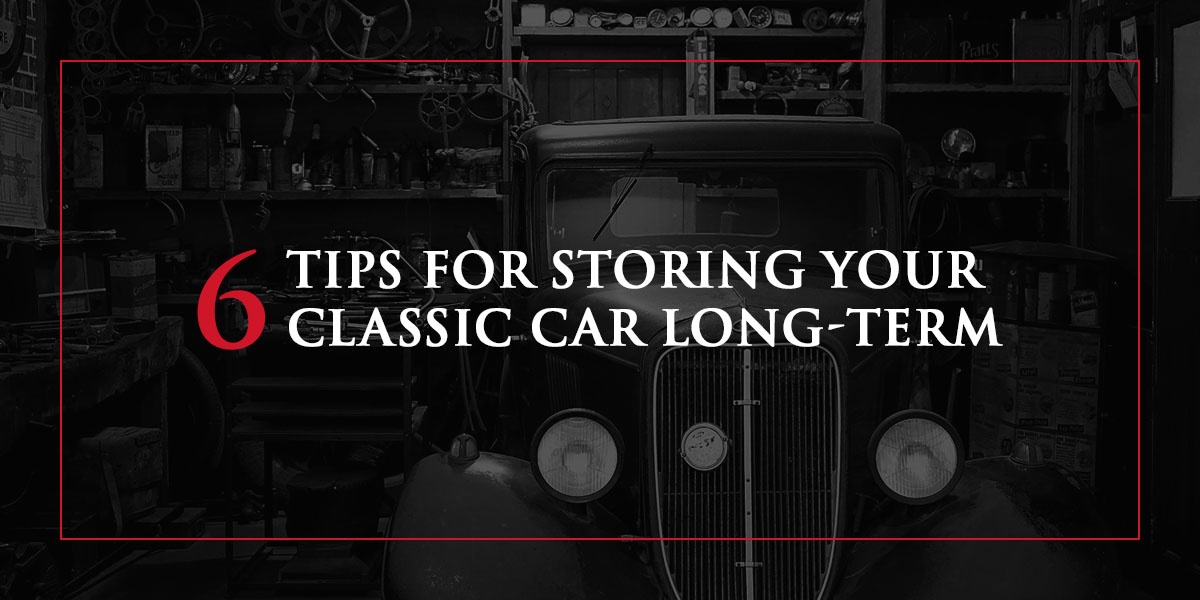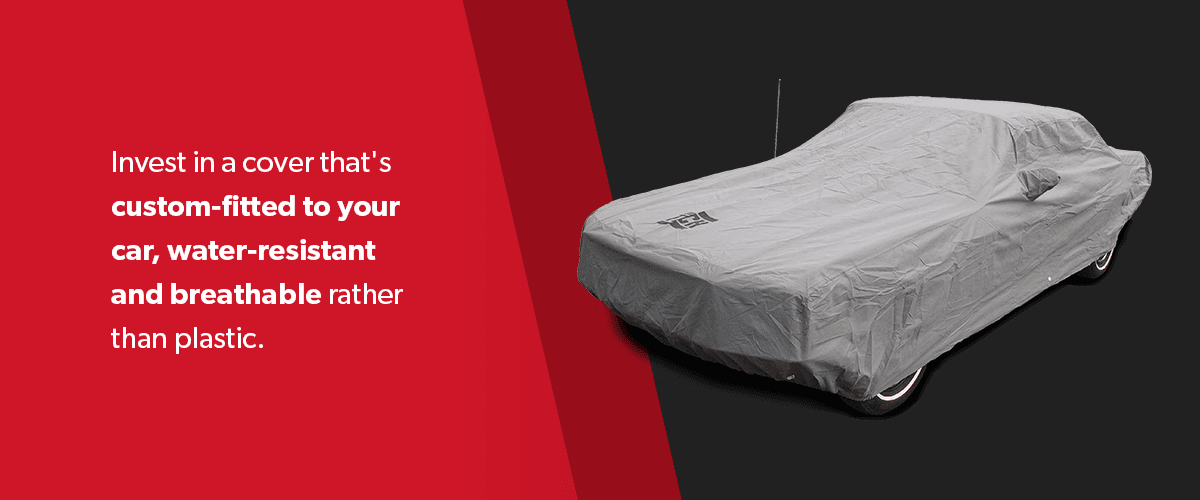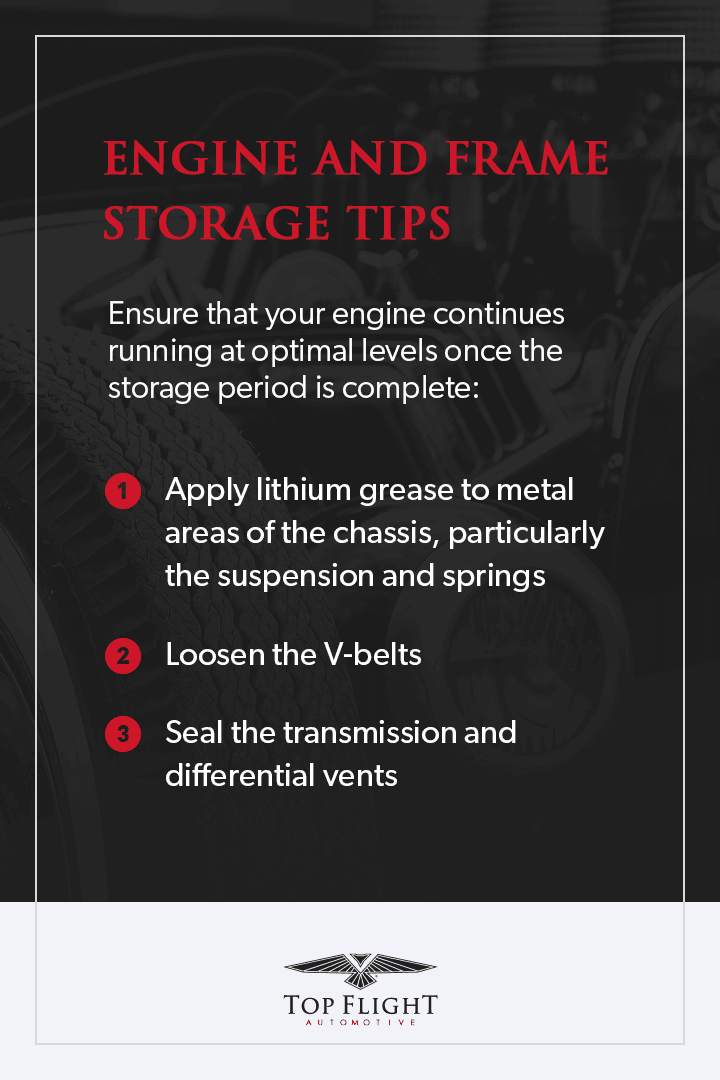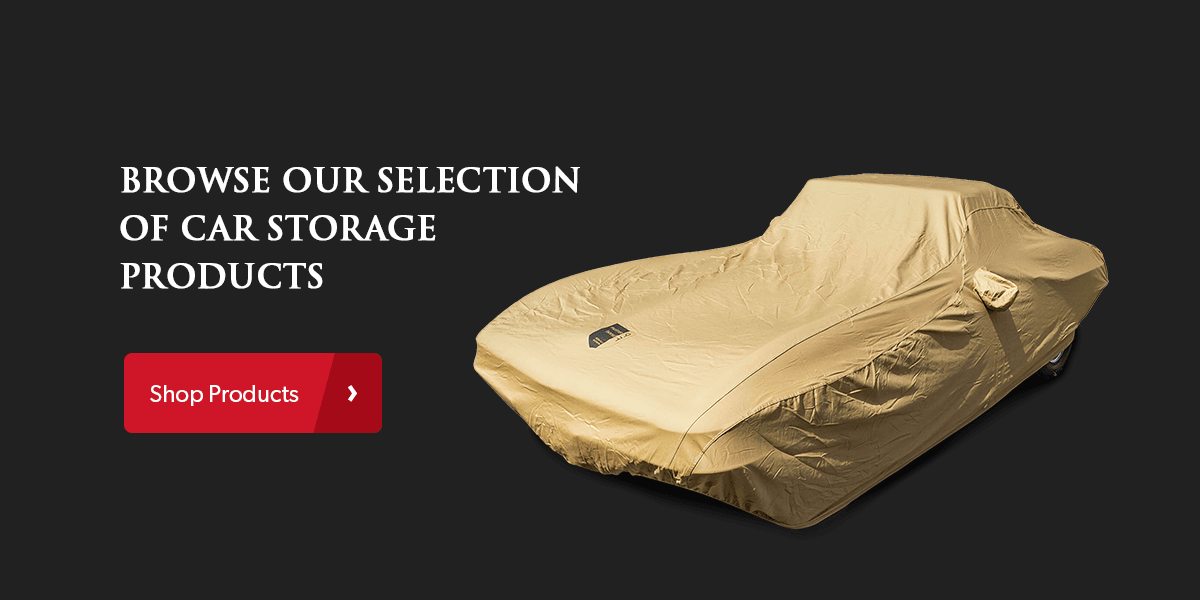
A classic car is the polar opposite of that car you buy simply to get from point A to point B — it transcends transportation. You don’t drive your classic car solely for function, but rather for the love of the machine. However, there are times when it pays to conserve the elegance and charm of your classic car by putting it in storage rather than leaving it exposed to the elements.
When the time for storage comes, whether it’s with the approaching winter or because you’re spending extended time away from home, you want to make sure your classic is kept as pristine as ever. That way, you’ll be able to drive it free from concern when it’s time to bring it out of storage.
With that in mind, here are six classic car storage tips to consider if you’re planning to store your classic car long-term.
1. Determine How Long You Plan to Store Your Classic Car and Your Storage Options
The first thing to consider when storing your classic car is the length of time you plan to keep it in storage, as this will determine the measures you should take to keep your classic in tip-top shape. For the sake of reference, short-term storage is typically three months or less, while long-term storage can be anywhere from four months to over a year. Long-term car storage will require more maintenance considerations than short-term storage. Additionally, the considerations for short-term storage often apply to long-term storage.
Other crucial considerations include budgetary constraints and insurance policies for collector car storage. Some insurance companies will have stipulations for the type of storage space you can keep your classic car in and still receive coverage. In general, most collector car insurance policies will accept a home garage, dedicated storage facility or private building. Budgetary considerations may complicate matters or limit your storage options.
2. Find the Right Storage Space
The space in which you store your car can make the difference between a pristinely preserved remnant of an earlier generation or a rusted and moth-eaten jalopy. While any old dirt-floor barn may be an economical choice in the immediate sense, the potential damage that a haphazard, jerry-rigged storage space could do to your classic could make a grown man cry.
A proper storage space is important to keep your car protected from the elements. Conditions such as too much exposure to the sun’s UV rays, temperature fluctuations and humidity levels can all weather your car and make its age show — in a bad way — whether that involves cracked vinyl, gaskets or hoses, faded paint or an overgrowth of rust. Whether you’re using your own home garage or one from a storage rental facility, it’s critical to find an effective and reliable storage space.
With that in mind, the ideal storage space for any classic car is an indoor garage or shop that’s well-ventilated, temperature-controlled and insulated. Heated brick garages provide the best temperature regulation and moisture control as brick has excellent temperature regulation and moisture control qualities. If the garage is unheated, a gravel floor is better than concrete because gravel has superior moisture control. Too much moisture can cause condensation and rust to build up on the engine and undercarriage. Either way, placing a tarp underneath your car as a moisture barrier is a good practice.
Classic Car Storage Tips
If you’re building a storage space from scratch for your car and don’t have the time or budget to build a heated brick garage, wooden or precast concrete units are a solid fallback option. However, the ideal storage space is not always the most practical or realistic solution. If a temperature-controlled, insulated and well-ventilated indoor space is not available to you, you might need to do some creative improvising to ensure your classic car receives the TLC it needs to continue holding timeless value.
For example, if a spot inside a shed or barn or outdoors under the open sky is your only option, you’ll want to invest in a high-quality cover that keeps animals and the elements out of your car. While outdoor storage isn’t ideal, there are things you can do to protect your classic car outside when your hands are tied. Even after taking proper protection measures to store your classic car outside, you should continue exploring indoor options in case a workable space materializes.

Take these protective measures if you have to store your classic car outside:
- Invest in a cover that’s custom-fitted to your car, water-resistant and breathable rather than plastic. Plastic covers trap condensation and cause corrosion, mold and mildew growth, even if they’re waterproof.
- If you can, lift your car off of the ground using jack stands to protect the tires, wheels and undercarriage from moisture.
- After jacking the car off the ground, remove the wheels to prevent unnatural strain on the suspension. Store the tires indoors to protect them from UV rays.
- Remove the battery and store it indoors on a trickle charger, especially if you live in an area with harsh winters.
- Place steel wool in the exhaust pipe to prevent rodents and small animals from making themselves at home.
- Close internal vents, set the heater to “recirculate”, and place rodent bait in the engine bay and rear chassis.
While most of these protective measures for storing your car also apply to indoor storage, these measures are extra crucial for the outdoor storage of your classic car. For indoor storage, you still should disconnect your battery. Never use a trickle charger while keeping the car covered, always remove the battery or remove the cover when charging. Likewise, you don’t necessarily need to remove the tires from your classic with indoor storage. You should still jack up the car to support its suspension and prevent the tires from getting flat spots.
3. Detail Your Car Before Storing It
Detailing your car prior to storage may seem counterintuitive, akin to getting all dressed up for an evening at home. However, dressing your car to the nines is not just for the benefit of those who see you driving it down Main Street — it’s also good for the car itself. Perhaps a better analogy for detailing and cleaning your car before storing it is like having a hot bath after a hard day of work before getting some shut-eye.
If you put your classic car away for long-term storage with dirt, moisture and dust on the exterior, that grime creates an environment ripe for corrosion and rust to wreak havoc on the paint, chrome and upholstery. Furthermore, that dust and dirt could also scratch the paint and chrome when the cover rubs against it. Any crumbs or dirt inside the car could attract some unwanted furry friends.
Now that you know the importance of clean storage, you’ll want your car to have that fresh look, smell and feel on the inside and out before putting it into hibernation. If you own a classic car, you’re likely no stranger to the minutiae of cleaning, waxing and polishing the interior and exterior of your classic, so we won’t waste your time going over those details. However, we will stress the importance of a thorough detail of your car before storage so it continues to look classy and ageless.
Don’t neglect the engine and frame when storing your classic car long-term, either. Ensure that your engine continues running at optimal levels once the storage period is complete with these tips:
- Apply lithium grease to metal areas of the chassis, particularly the suspension and springs.
- Loosen the V-belts.
- Seal the transmission and differential vents.

4. Fill Up the Tank and Change Fluids
Before you drive your car into the storage space and lock the door behind you, make sure you fill up the tank. While this step may seem counterintuitive, a full tank will prevent oxidation in open spaces that could rust the fuel tank. If you’re planning to keep your classic in storage for longer than three months, drain the fuel tank before filling it up to avoid stagnation, which can lead to oxidation. The fuel stabilizer will also prevent the fuel from hardening and stagnation.
In addition to fuel, take the time to change the other fluids in your car — bleed the brakes, flush out the antifreeze fluid, power steering fluid, transmission fluid and drain the engine oil — and top them back up. Doing so will help avoid any deterioration and corrosion from acids and other contaminants. If you’ve recently changed other fluids, such as your brake fluid, you can likely get away with just topping it off. However, if it’s been a while, the safest choice is to drain and replace the fluid.
If you’re storing your car for less than one year, add the proper amount of distilled water to the antifreeze. On the other hand, if you’re storing it for one year or longer, fill the coolant tank up entirely with antifreeze. Make sure you take your classic for a drive after changing the fluids and adding fuel stabilizer to make sure the fluids mix well and reach all of the necessary components. After the short drive, top up the tank again to make sure it’s as full as can be.
Once you’re back and satisfied with your work, you should also remove the spark plugs, spray motor oil into the cylinders, hand turn the engine to circulate the oil through the cylinders and then put the spark plugs back in to prevent the cylinder bores from rusting.
5. Do Regular Check-Ins
While classic cars aren’t usually meant to be your regular mode of transportation, they aren’t meant to sit around and not be used at all, either. As such, it may be helpful to start the engine from time to time throughout the storage period and take it for a short drive to recharge the battery and allow the fluids to circulate throughout the system. Taking this time will keep your car nimble and give you peace of mind that your classic will be ready to go when the time comes to bring it fully out of hibernation.
You’ll want to clean it and top it up with fuel after each use if you choose to take it for a spin. Any exposure to the elements can result in problems once you put your classic back in storage. However, some experts disagree on whether you should start your car while it’s in storage, particularly during the winter months. The logic behind the disagreement is that starting the car could introduce moisture and contaminants to the engine. Others argue that the circulation of oil and fluids will coat the engine to prevent corrosion and deterioration.
Whether you choose to start and drive your car periodically while it’s in storage or not, be sure to keep an eye on the fluid levels throughout the storage period if there are any leaks or other issues. If you’re storing your classic for the winter, keep an especially close eye on antifreeze levels and winterize as necessary to prevent freezing. Staying on top of the fluid levels and checking for potential leaks will prevent any complications when bringing your car out of storage.

You may also notice occasional rust buildup as you check in on your classic. A little bit of rust is to be expected time and again, especially with older cars. However, the key is to stay on top of the rust so that it doesn’t spread and become an eyesore or a danger. If you notice any problem areas on your car, apply a high-quality lubricant regularly to nip the rust in the bud.
6. Bringing Your Classic Out of Hibernation
Once the long winter is over, you can finally put your classic on the blacktop and hear the engine purr as you proudly drive off on whatever adventure the car takes you to next. While you’re likely anxious to put the key in the ignition and get on the road, make sure you cover all the basic pre-inspections before doing so. Check the tire pressure, fluid levels and everything else — you know the drill.
If you’ve kept your classic car in a confined or poorly ventilated space, you might want to roll the car out of the storage area before starting the ignition. The oil in the spark plug holes will produce a significant amount of smoke through the exhaust when you start it up for the first time after it’s been in storage.
Top Flight Automotive Makes Classic Car Storage Simple and Secure
Getting ready to store your classic car and want to make sure you do it right? The classic car experts at Top Flight Automotive have the experience and know-how to guide you to the best way to store your classic car long term. Top Flight Automotive has over 40 years of experience serving the Corvette and classic car community and is the leading manufacturer of Corvette interiors, parts, wheels and accessories.
Browse our selection of car storage products today to ensure your classic car is kept in pristine shape.











Leave a Response